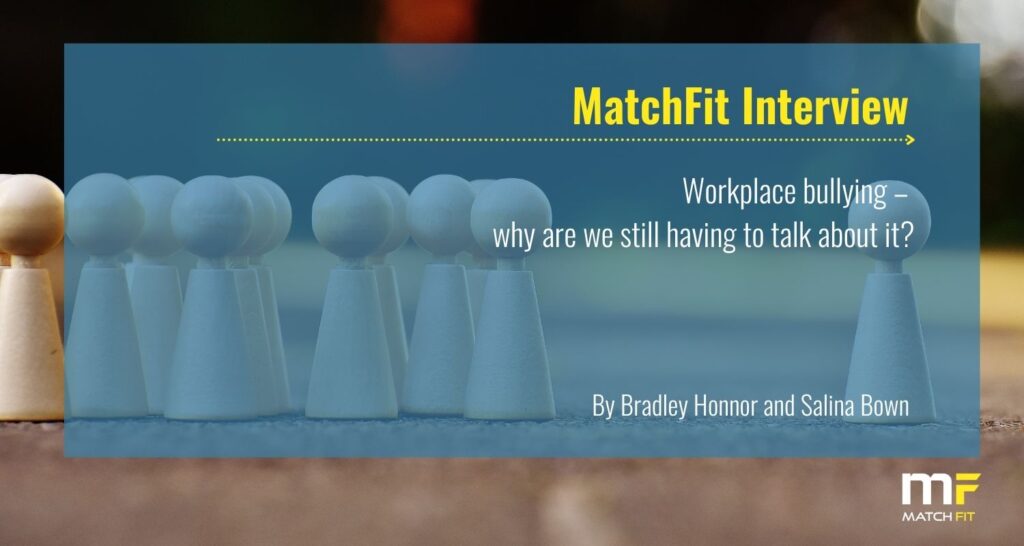Despite an increased focus on employee wellbeing, inclusion and adaptation in recent times, harassment and/or bullying is still an issue stubbornly adhering to the list of challenges that organisations, and HR departments in particular, have to deal with.
A widespread issue that’s not going away
In a 2018 TUC survey, 45% of safety representatives listed bullying as one of their top five workplace concerns, and the second biggest workplace issue after stress. The survey found that bullying/harassment was worst in local and central government.
And it’s not just in the public sector. A 2020 Chartered Institute of Personnel and Development report found that 15% of workers experienced bullying in the last three years, while 4% said they’d been sexually harassed at work and 8% experienced other forms of harassment. Moreover, 24% of employees thought challenging issues such as bullying and harassment were swept under the carpet in their organisation.
Whilst research suggests that the most common type of bullying is by a manager against a subordinate, 9% of senior managers report being targeted in the past nine months.
An HR perspective
Someone with a particular insight into this area is Salina Bowen, Deputy Director of Civil Service HR Casework & HR Technical Consultancy Service. Bullying, harassment and discrimination figures have risen in the Civil Service in many areas, as shown by the Cabinet Office Bullying, Harassment and Misconduct Survey 2018. MatchFit has been working with Salina and the HR Casework team to deliver the CLIMB development programme, and address some of these issues. One of the very positive outcomes has been the increased tendency for people to speak out and stand up when they feel that they’ve been subjected to harassment or bullying.
MatchFit Managing Director Bradley Honnor says “when we do this kind of work, we often see an increase in grievances, or an increase in people wanting to report or talk about this particular subject. This isn’t necessarily a bad thing, because it enables people to be more transparent.”
“And people become more confident in calling out bad behaviour” says Salina. “Once they’ve been through some of the processes of the CLIMB programme, people know each other better; they feel an obligation to speak out and more empowered to do so. They also feel more competent in delivering that message as well.”
“An increasing incidence of grievance reports is no bad thing” Salina agrees. “Because to me, this actually shows that people are happy to complain formally, rather than behind your back, when you can’t actually do anything.”
How useful are staff surveys?
“This is one of the problems we’ve had with staff surveys, because they are anonymous. You can’t work out what the problem is, you just get a general, often blurred picture of the issue, without the context, and without actually being able to ask people directly what they mean.
But that’s what’s so good about the CLIMB programme and the work that goes into that. It digs down to actually, what is the real issue? Harassment, discrimination, bullying, victimisation: this is only headline information. What sits behind it, what is the root cause?
People think they know, but actually, the root cause could be very simple. It might be the way I talk to you, or you talk to me. It might be that you don’t make me a cup of coffee but make everybody else one. We can jump to conclusions after a survey that we’re all harassing each other, we’re calling each other really inappropriate names, when actually some of it could be quite simple stuff. And I think that’s what we’ve discovered – there’s often something far more straightforward that sits behind these headlines, which is actually solvable, if known about.”
Is the focus in the right place?
Bradley agrees. “We had a similar case recently” he says. “The client’s employee survey cited bullying, harassment and discrimination as all being disproportionately high. And then when we looked into it, it wasn’t their staff or leadership causing the problem at all. It was their stakeholders; essentially their clients phoning in and acting inappropriately and their staff feeling like they were bullied by the customer. So, without that context, the organisation was being lead to believe they had a negative culture of bullying, harassment, discrimination, and it wasn’t like that at all.
When we looked at the issue at hand, we could see that what was needed was to develop staff resilience and stakeholder management, so they can have those challenging conversations without feeling intimidated or being bullied. So you do have to ask if a survey that doesn’t give you clear information is something you can actually act constructively on? You might make decisions based on those survey results which could be entirely the wrong course of action.”
Defining terminology
One thing that’s important to consider is the definition of the terms, because one person’s perception of bullying could be another person’s perception of assertiveness.
Bradley explains “When we’re consulting, often clients will say that they think there’s a bit of sensitivity around a diversity, or harassment, or discrimination issue. If I think you’re harassing me, that’s my reality, my truth. It doesn’t matter if you don’t think it is an issue. You may not even have done anything wrong. But it’s still real to me. This creates conflict. Identification of how we define these things is really important.”
“But then it gets even more complicated, doesn’t it?” Salina adds. “A common survey question is ‘have you witnessed harassment?’. That’s a very complex question, because people’s perceptions can be so different. The person supposedly being harassed may think nothing of it at all, but the ‘witness’ may have a completely different set of boundaries which mean they view the behaviour in a very different way.”
In the next article in this series, Bradley and Salina look at the nuances and complexity of defining what is appropriate language and behaviour.

